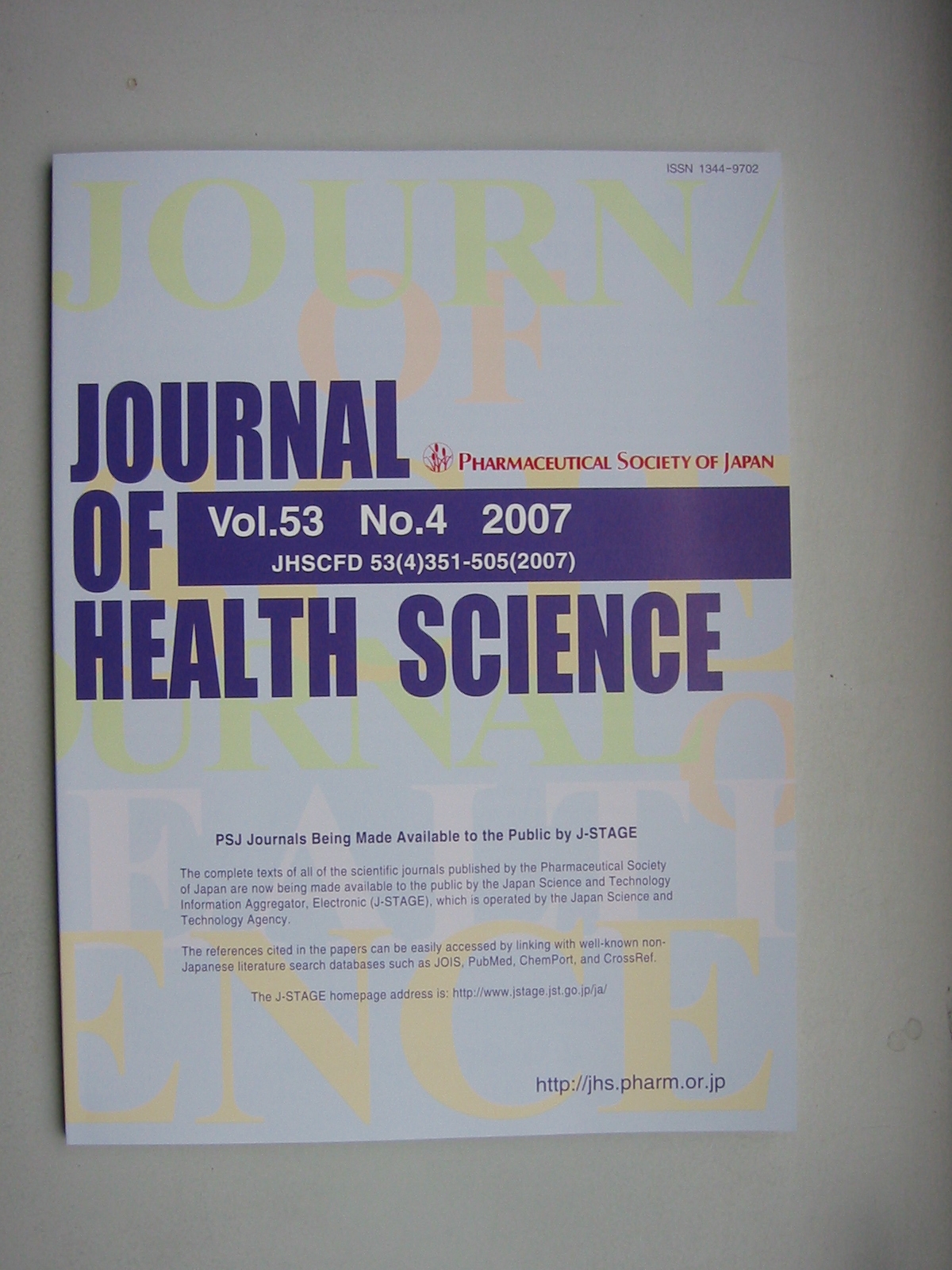Volume 52, Issue 5
Displaying 1-20 of 20 articles from this issue
- |<
- <
- 1
- >
- >|
MINIREVIEWS
-
2006Volume 52Issue 5 Pages 489-494
Published: 2006
Released on J-STAGE: October 01, 2006
Download PDF (189K)
REGULAR ARTICLES
-
2006Volume 52Issue 5 Pages 495-511
Published: 2006
Released on J-STAGE: October 01, 2006
Download PDF (1317K) -
2006Volume 52Issue 5 Pages 512-521
Published: 2006
Released on J-STAGE: October 01, 2006
Download PDF (1002K) -
2006Volume 52Issue 5 Pages 522-531
Published: 2006
Released on J-STAGE: October 01, 2006
Download PDF (567K) -
2006Volume 52Issue 5 Pages 532-539
Published: 2006
Released on J-STAGE: October 01, 2006
Download PDF (999K) -
2006Volume 52Issue 5 Pages 540-548
Published: 2006
Released on J-STAGE: October 01, 2006
Download PDF (588K) -
2006Volume 52Issue 5 Pages 549-557
Published: 2006
Released on J-STAGE: October 01, 2006
Download PDF (736K) -
2006Volume 52Issue 5 Pages 558-567
Published: 2006
Released on J-STAGE: October 01, 2006
Download PDF (511K) -
2006Volume 52Issue 5 Pages 568-577
Published: 2006
Released on J-STAGE: October 01, 2006
Download PDF (205K) -
2006Volume 52Issue 5 Pages 578-584
Published: 2006
Released on J-STAGE: October 01, 2006
Download PDF (326K) -
2006Volume 52Issue 5 Pages 585-589
Published: 2006
Released on J-STAGE: October 01, 2006
Download PDF (352K) -
2006Volume 52Issue 5 Pages 590-597
Published: 2006
Released on J-STAGE: October 01, 2006
Download PDF (563K) -
2006Volume 52Issue 5 Pages 598-606
Published: 2006
Released on J-STAGE: October 01, 2006
Download PDF (891K) -
2006Volume 52Issue 5 Pages 607-612
Published: 2006
Released on J-STAGE: October 01, 2006
Download PDF (213K) -
2006Volume 52Issue 5 Pages 613-622
Published: 2006
Released on J-STAGE: October 01, 2006
Download PDF (790K)
RESEARCH LETTERS
-
2006Volume 52Issue 5 Pages 623-627
Published: 2006
Released on J-STAGE: October 01, 2006
Download PDF (165K) -
2006Volume 52Issue 5 Pages 628-632
Published: 2006
Released on J-STAGE: October 01, 2006
Download PDF (351K) -
2006Volume 52Issue 5 Pages 633-636
Published: 2006
Released on J-STAGE: October 01, 2006
Download PDF (285K) -
2006Volume 52Issue 5 Pages 637-641
Published: 2006
Released on J-STAGE: October 01, 2006
Download PDF (490K) -
2006Volume 52Issue 5 Pages 642-647
Published: 2006
Released on J-STAGE: October 01, 2006
Download PDF (359K)
- |<
- <
- 1
- >
- >|
